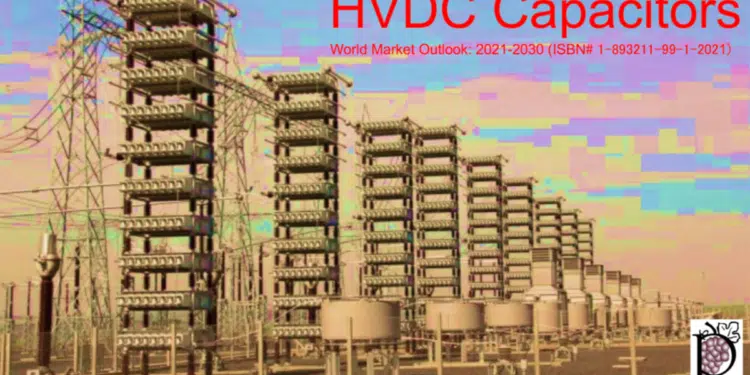Paumanok Inc. published Deep Dive Analysis in the Emerging $250 MM Market for High Voltage Direct Current Capacitors Consumed in Modules for HVDC Offshore Wind and Interconnect Projects Between 2021 and 2030. This detailed analysis forecasts value, volume and pricing of MPP dry-type compact capacitors in HVDC Converters from 2021 to 2030, with detailed analysis of global wind and interconnect projects by country; and long term analysis according to Feed-In-Tariff guidelines and projected MW wind output by 2030.
The study is an analysis of High Voltage Direct Current capacitor markets, technologies and opportunities in Static Converter architecture, with forecasts for consumption in offshore wind projects and interconnects between 2021 and 2030.
The study offers a detailed analysis of the significant technology changes occurring in HVDC capacitors as “dry-type” compact capacitors are replacing traditional oil-filled designs (A key shift in technology, with capacitor design changes impacting overall environmental footprint of grid and interconnections). The study offers a detailed analysis of the types of capacitors being produced for HVDC offshore wind and interconnect projects. This includes a compare and contrast of HVDC capacitors by manufacturer that includes case size, capacitance, voltage, resin filler, MPP film deposition and segmentation; performance, fusing and connections by vendor, with product specifications from 22 vendors compared globally.
The study describes each level of demand, from individual cylindrical and box type metallized polypropylene capacitors, to capacitor modules, to automatic capacitor banks and then into the static converter market for HVDC power factor correction and DC link filtering.
The study addresses the value, volume and average unit pricing for metallized polypropylene capacitors, modules and automatic banks. Ten-year growth rates for power transmission capacitors, HVDC capacitors, and then capacitors for LCC and VSC are shown in the report. Consumption for capacitors is also noted by world region, with detailed assessments made based upon actual installation projects, FiT purchase profiles for capacitors (advanced purchases) and detailed regional forecasts to 2025 with longer term outlook to 2030 based upon key country forecasts for MW generation by wind energy.
The study also addresses how Feed-In-Tariffs have impacted the recent markets in China and Germany, and how these incentives will generate more capacitor demand between 2021 and 2025 with longer term forecasts to 2030 based upon country planned Gigawatt generation from wind energy as well.
The study offers a detailed comparative analysis from the major product offerings for HVDC dry-type capacitors from Hitachi ABB, TDK Corporation, Vishay Intertechnology, Electronicon, Yageo-Kemet, WIMA, Panasonic, Kyocera-AVX, Nichicon, ICA, FRAKO, API Norfolk, HJC, Wuxi HongGuang, LeClanche, Faratronic and many others.
A detailed forecast is given for the value, volume and pricing for HVDC capacitors by year from 2021 to 2025. The forecasts are based upon a detailed assessment of all HVDC planned installations from 2021 to 2025 and additional forecast data from 2026 to 2030 based upon a country by country forecast of wind generation in MW and Operating Voltage by 2030.
The study includes 49 companies that produce power transmission and distribution capacitors, and 22 companies that produce newer “dry-type” capacitor alternatives.
118 Pages, 26 Tables and Graphs;
Published February 2021


































